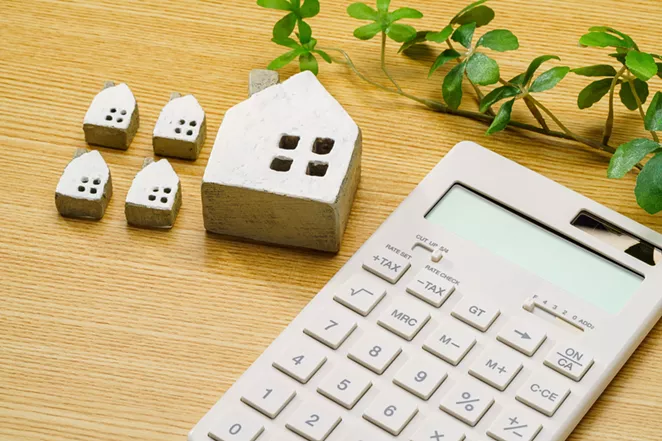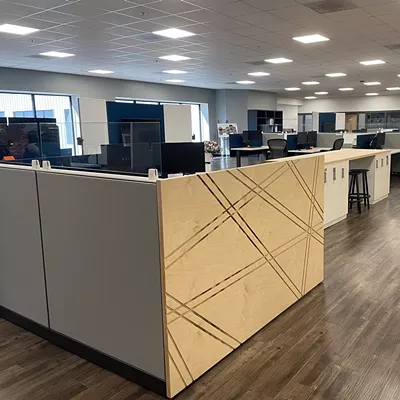The National Association of Realtors held its annual economic and real estate summit in December to provide a forecast of the national economy and its impact on the real estate market in 2025. It was hosted by Lawrence Yun, chief economist and senior vice president of research for NAR, and moderated by Jessica Lautz, deputy chief economist and vice president of research for NAR. Residential real estate panelists were Danielle Hale, chief economist at realtor.com; Robert Dietz, chief economist for the National Association of Home Builders; and Michael Frantantoni, chief economist and senior vice president of research and business development with Mortgage Bankers Association.
Yun opened with a headline from The New York Times – Can the U.S. climb out of its unprecedented housing crisis? Yun showed a chart of the substantial wealth gain for homeowners and claimed there's "absolutely no housing crisis for homeowners."
Yun continued, "Another crisis we do not have is homeowners defaulting on their mortgages," and Frantantoni agreed, based on data from the Mortgage Bankers Association.
"Mortgage delinquencies are about as low as they've ever been," Frantantoni said.
However, Yun said, "we do have a housing crisis when it comes to affordability." NAR's affordability index accounts for income, home price and mortgage rates, and that index reached a 20-year low in existing-home sales during 2023-2024. From a bigger picture perspective, said Yun, when Americans are buying homes it's a reflection of advancing careers and advancing lives, so this historical low points to challenges for homebuyers.
This is impacting renters who would like to buy a home but cannot make that leap, explained Yun. Forty years ago, first-time homebuyers were generally in their twenties. Due to the affordability crisis, the 2024 median age of the first-time home buyer is 38, which is an all-time high. If a 37 or 38-year-old renter is not facing a rent increase and perhaps receives a concession to stay in their apartment, renting is very appealing and that keeps entry-level buyers out of the market.
On a brighter note, Yun said that October showed an increase of home sales year over year, and the number of pending sales contracts implies that better days are ahead for the real estate market. Additionally, more inventory is steadily appearing as life-changing events cause people to put their homes on the market. For new construction, home builders are becoming more active as stock prices have risen, which provides capital to expand inventory. Yun said he anticipates existing home sale prices to increase 7%-12% over the coming year, and he expects new home price growth to be more modest, which will allow income to catch up with home prices.
Hale, chief economist at realtor.com, gave her forecast. Hale said she expects a slight increase in home sales, approximately 1.5%, but admitted "it will be a slow climb out of two very slow years in the housing market." She thinks home prices will increase at a slow pace, and easing mortgage rates and income gains will improve affordability, "but we're not going to get back to pre-pandemic levels."
The market will be "challenging for first-time home buyers because affordability will still be stretched," Hale said. She predicted rents will remain relatively flat, which doesn't incentive tenants to become homeowners "You have to think long-term for the financial benefits of homeownership to pay off, given the cost structure today," she said.
Dietz, of the National Association of Home Builders, expects "an extension of the 2017 tax cuts which will help businesses, including builders and remodelers."
He said there are some unknowns regarding tariffs and immigration until the Trump administration policies are fully enacted, and changes in those policies could have impacts on the housing market in several ways.
While Dietz said less than 10% of construction materials used in housing are imported, he noted enforcement of the immigration policy could cause a significant loss of skilled labor in the residential construction industry. This would slow the pace of home building, which Dietz said would be unfortunate, since he would otherwise expect an increase in single-family home starts.
Opening his remarks with a positive forecast, Frantantoni said short-term mortgage rates will be coming down. Yun predicted rates could go down to 6%, but said the new normal is higher than that, and "by historical standards is not bad as it is still below the long-term average of 7%."
Frantantoni said mortgage origination volume should show about 20% growth, with 5% coming from existing home sales and 10% from new home sales. Regarding loan origination, he said the last couple of years were driven by the first-time homebuyer, but we will see some repeat buyers coming back to the market as they now have the equity to fuel those purchases.
Overall, there's optimism among real estate and lending professionals, with an increased number of pending sales contracts, a growing inventory and favorable interest rates. Hale said this will make the market better for both buyers and sellers who then become buyers.
Hale said the market balance is improving, and this "should help facilitate more transactions, which ultimately means people are getting what they want and need out of the housing market. A housing market that's more balanced will work better for everyone."














